Research areas & fellows
LEAD aims to empower diverse research talent to become the next generation of creative, collaborative, responsible and inclusive research leaders.
You can read more about the fellows' projects and aims in their individual project descriptions below.
First cohort
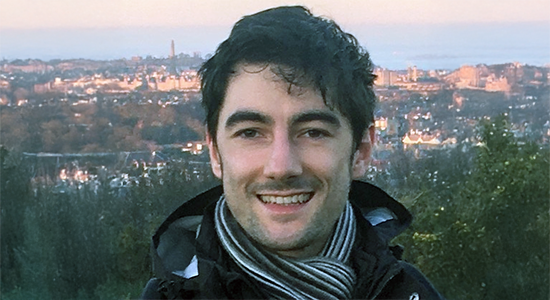
Name
James Bryson
Nationality
British
Academic Background
PhD in mammalian synthetic biology (Edinburgh university)
Project Title
Dissecting how ribosomal RNA modifications guide translational programs in health and disease.
Project Background
Each gene within our DNA helps to shape our cells, organs and body through a two-step process.
First the genes are written out or transcribed into ‘messenger’ RNA (mRNA) and then this mRNA is translated into the proteins that build everything from our muscles to the ion channels that help fire the synapses in our brain. A lot of work has investigated how changes in transcription shapes the fate of cells during processes like foetal development, however we have much more limited tools for understanding the next step, translation.
My work focusses on building up tools so we can understand how regulation of translation is defining gene expression, in particular dissecting the role of modifications in the machine that drives translation (the ribosome).
Small chemical modifications of RNA within the ribosome itself play a role in how the ribosome engages with different mRNA and what types and amounts of proteins are produced.
In this project I will be utilising nanopore sequencing to directly observe how different patterns of these modifications cause the ribosomes to favour translating different types of mRNA as well as employing newer variants of CRISPR to systematically screen the role of individual RNA that lay these modifications (snoRNA).
Project Aim
The hope is that armed with the tools I am developing we can much better understand how changes in gene expression guide processes such as development, regeneration and aging.
Through improved understanding we should be better placed to intervene, promoting healthy outcomes and more effectively tackling debilitating diseases.
Expected Outcome
Alongside making important discoveries about a key stage of gene expression regulation, we expect to provide the broader research community with tools for dissecting how modifications in the translation machinery shape cell fate and ultimately influence health or disease.
Contact
Host lab: Anders Lund
 Name
Name
Iman Safari
Nationality
Iranian
Academic Background
Cell and molecular biology
Project Title
Role of damaged mitochondrial DNA and mitochondrial dysfunction in multiple sclerosis inflammation
Project Background
Multiple sclerosis (MS) is a neuroinflammatory disorder of the central nervous system (CNS) and the leading cause of neurological disabilities in young adults with the highest annual incidence in Europe and North America.
MS is associated with localization of the aberrantly activated peripheral immune cells in CNS, however the source of its activation is yet to be elucidated.
Low concordance rate for MS in high-risk individuals signals the compulsory role of other unknown determinants in predisposition to disease. In progressive MS (PMS), as other neurodegenerative diseases, molecular changes converge on respiratory complexes of mitochondria and mitochondrial DNA (mtDNA) within neurons.
Gray-matter neurons of PMS patients harbor high levels of mtDNA mutations and mitochondrial respiratory complex deficiencies. Induction of breaks in mtDNA of mice oligodendrocytes results in MS like pathology.
Further, a strong association of specific mtDNA variations with MS is reported. MT dysfunction and mtDNA released from defective mitochondria are linked to several inflammatory situations.
Data support the contribution of mitochondrial dysfunction and fragmentation in MS neurodegeneration. T cells of MS patients show intense mitochondrial homeostasis and metabolic impairments. Of note, subtle alterations in metabolism of mitochondria or their dynamics can change the fate of cells.
I hypothesize that the inflammation in MS is associated with the presence of defective mtDNA in the periphery circulation which can act as stimulatory signals which elicit aberrant immune responses by altering gene expression profiles and functionality of mitochondria in some memory immune cells.
Project Aim
My overarching goal is to investigate the association of damaged mtDNAs and impaired mitochondrial phenotypes with inflammation in MS.
To address this, I will use a lab-developed technique called single-cell “mtDNA structural variation sequencing” (MitoSV-seq) and single cell RNA sequencing approach, together with a battery of assays to extensively assess the mitochondrial phenotypes in potentially identified dysregulated immune subsets.
To reach this, we have use serum and peripheral blood mononuclear cells of a unique cohort of familial and paediatric MS cases.
Expected Outcome
- Introduction of novel biomarker, based on mitochondrial DNA, for differentiation of MS types, determination of treatment efficacy, early clinical intervention for high-risk relatives of patients
- Potential identification of novel immune cell subsets with perturbed prevalence as targets for developing new effective therapeutic agents
Contact
Host lab: Shohreh Issazadeh-Navikas
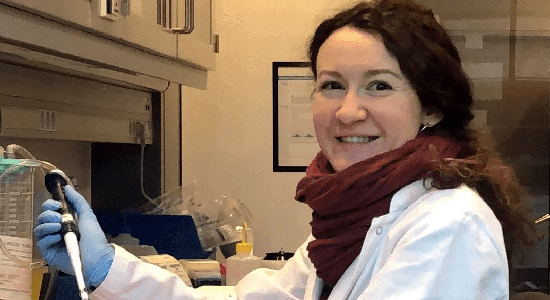
Name
Ülkü Uzun
Nationality
Turkish
Academic Background
DPhil in Biochemistry (University of Oxford), MSc. Evolutionary Biology (Uppsala University & University of Montpellier), BSc. Molecular biology and Genetics (Middle East Technical University)
Project Title
Investigation of translational mechanisms instigated through specialised ribosomes in neurons
Project Background
The ribosome plays a crucial role in decoding genetic information into proteins. Recent research has shown that ribosomes have different compositions and modifications at both the protein and RNA levels, creating ribosome subtypes that provide an extra layer of control to fine-tune gene expression. However, their roles in different biological contexts and detailed mechanisms are still unknown.
This project focuses on translation in neurons, which have a specialised gene expression program and require local protein synthesis. Several lines of evidence support the active role of ribosome subtypes in gene expression regulation in neurons.
First, in axons and dendrites, a subset of ribosomal proteins and factors is more abundant than in the cell body, pointing to differential regulation of ribosomes in local compartments.
Second, while translation is mostly performed by multiple ribosomes per mRNA (polysomes) in the cell body, it is mainly carried out by single ribosomes (monosomes) in neurites, suggesting intrinsic differences between translational programs in the respective compartments.
Recent studies also suggest that ribosome subtypes are involved in cell identity, particularly in neurons. Together, ribosome subtypes seem to provide an extra layer of regulation in local protein synthesis in neurons, but further research is needed to fully understand their potential role in this process.
Project Aim
Investigation of the specialised translation program in neurons and address the following questions:
- What is the extent of ribosome heterogeneity in neurons?
- Do specific ribosome subtypes localize to particular subcompartments in neurons?
- Do distinct ribosomes play a role in local translation in neurons?
Expected Outcome
- Identification of ribosome subtypes in neurons based on differences in their compositions and modifications at the protein and RNA levels across the cell body and axon/dendrites.
- Understanding of the contribution of distinct ribosomes to local translation in neurons, including the identification of mRNAs selectively translated by specific ribosome subtypes.
Contact
Twitter: @uulku
Host lab: Anders Lund

Name
Victor Oginga Oria
Nationality
Kenya
Academic Background
PhD Cancer Biology, University of Freiburg, Germany
Project Title
Deciphering the role of endothelial-derived factors (angiocrine signals) in metastasis initiation
Project Background
Metastasis accounts for over 90% of cancer-related mortality. Therefore, the reduction of cancer-related deaths is linked to our capacity to halt or reverse this process.
Metastasis is a complex process and is inherently driven by crosstalk between tumor cells and different resident stromal cells within the tumor microenvironment (TME). An example of these stromal cells are endothelial cells that play a key role in angiogenesis, which is the development of new and abnormal blood vessels that promote tumor progression.
Largely, endothelial cells are seen as passive players in TME whose role is to respond to angiogenic cues in the TME to form new blood vessels. However, there is an emerging consensus that the endothelium is an active player within its microenvironment orchestrating a unique cellular milieu. They do this by secreting tissue-specific factors, hereby-termed angiocrine factors, which regulate the local microenvironment in both healthy and diseased settings.
While there are many studies that demonstrate the contribution of stromal cells to metastasis, there is a knowledge gap about the function of endothelial cells beyond angiogenesis. Here, we seek to characterize the role of angiocrine factors in metastasis initiation, specifically their contribution towards cancer cell local invasion and intravasation into blood vessels.
Project Aim
Our objective is to characterize the angiocrine signature of endothelial cells under different physiological conditions (normoxia and hypoxia) and its role in metastasis initiation.
Our overall goal is to identify a unique angiocrine signature that regulates endothelial-tumor cell communication to initiate metastasis and decipher ways to block this process.
Expected Outcome
Our research will provide insights into unique angiocrine signature that regulate the initiation of metastasis. Uncovering these angiocrine-dependent mechanisms might provide new opportunities to either prevent or effectively treat metastasis.
Contact
Host lab: Janine Erler
Second cohort

Name
Anita Kurilla
Nationality
Hungarian
Academic Background
PhD in Genetics (University of Eötvös Lóránd, Budapest, Hungary), MSc. Biotechnology (University of Corvinus, Budapest, Hungary), BSc. Animal Husbandry (Szent István University, Gödöllő, Hungary)
Project Title
Investigating the role of long-noncoding RNA (LINC00673) in the initiation of pancreatic ductal adenocarcinoma
Project Background
Pancreatic cancer is a highly malignant tumor of the digestive system. The rapid development, early metastatic events and late appearing initial symptoms lead to difficulties for patients to obtain an early diagnosis. Furthermore, the high incidence of drug resistance may cause poor prognosis.
The 5-year survival rate is quite low, approximately 8–9%. Thus, it is highly essential to develop novel biomarkers for efficient screening and detection of pancreatic cancer at an early stage. To achieve this, it is crucial to define the molecular background of pancreatic cancer development via in vitro models for disease initiation.
Pancreatic ductal adenocarcinoma (PDAC) arises from normal acinar or ductal epithelium cells whereof several transitions take place and eventually cells form to a fully transformed state.
Related to this, it has emerged that long non-coding RNAs (lncRNA) play regulatory role in pancreatic cancer. LncRNAs are defined as molecules longer than 200 nucleotides and that are not translated into functional proteins.
Preliminary results of the Arnes group – which I join for the LEAD project - revealed that lncRNAs can regulate the initiation of PDAC.
Project Aim
Investigate the role of LncRNAs in the initiation of pancreatic cancer using stem cells.
Our aim is to answer the following questions:
- What is the role of LINC00673 in the process of the differentation into pancreatic progenitor state?
- Does LINC00673 regulate cancer initiation?
- What is the molecular background of LINC00673 which is connected to the activation of KRAS?
Expected Outcome
- The results of this research could lead to develop lncRNA-based biomarkers
- Obtaining a model to understand the role of lncRNAs - or other regulators - in pancreas development and cancer initiation.
Contact
Twitter: @AKurilla
Host lab: Luis Arnes / Lars Engelholm

Name
Hannah Rostalski
Nationality
German
Academic Background
PhD in Molecular Medicine, Neuroscience (University of Eastern Finland, Kuopio, Finland), M.Sc. in Organismic Biology and Evolution (Humboldt-University of Berlin, Berlin, Germany), B.Sc. in Biology (Humboldt-University of Berlin, Berlin, Germany)
Project Title
Investigating and Targeting of Microglia-Derived Molecular Mechanisms Underlying Treatment Resistance in Glioblastoma
Project Background
Glioblastoma is the most aggressive brain tumor in adults. So far, there is no cure against glioblastoma, but patients undergo surgery (if possible) to remove the tumor, and thereafter chemo- and radiotherapy. However, in all patients who survive long enough, the brain tumor will start growing again and the median survival time after the first diagnosis is only 14 months.
The low treatment efficacy and tumor recurrence come from tumor cells which infiltrate the surrounding healthy tissue and are not removed during the surgery. Also, non-tumor cells which are adjacent to and recruited by the tumor cells fail to eliminate tumor cells and support tumor re-growth after surgery.
Microglia is one cell type, which plays an important role during tumor re-growth. This brain-resident immune-cell type is important to maintain a healthy brain environment during development and aging. However, in the case of glioblastoma, microglia fail to eliminate tumor cells.
Furthermore, they support the growth of tumor cells and prevent other immune cells such as T-cells to fulfill their functions, e.g. to kill tumor cells. In order to unravel the interactions of microglia and tumor cells, we will use co-cultures of patient tumor cells and microglia.
The co-cultures will be characterized using spatial transcriptomics and functional assays. In order to validate and target mechanisms with potential therapeutic relevance, gene-editing in combination with high-throughput screenings will be used.
Project Aim
We aim to unravel and validate the mechanisms by which microglia foster tumor re-growth after and during chemo- and radiotherapy.
Expected Outcome
From this project we will obtain novel information on the mechanisms behind treatment resistance in glioblastoma and find new therapeutic targets and potential biomarkers indicative of treatment efficacies.
Contact
Host group: Bjarne Winther Kristensen

Name
Miao Tian
Nationality
Chinese
Academic Background
MD in Immunology & Cancer Biology, Zhejiang University, China
Project Title
Investigation of synthetic lethality between WEE1 and PKMYT1 in Primary Liver Cancers
Project Background
Primary liver cancers (PLC), such as hepatocellular and intrahepatic cholangiocellular carcinoma, are among the few malignant tumors that display a rising incidence in the world. The underlying mechanisms of PLC pathogenesis are still widely unknown, however numerous mutational processes are known to be involved. Recently, rapid advances in the exploration of novel small-molecule inhibitors that play important roles in regulating the cell cycle checkpoints and DNA damage response have provided insights into developing novel agents for PLC therapy.
Synthetic lethality is a relationship between two functional genes where the loss of either one of them is viable but the loss of both is lethal to the cell. DNA damage response defects in cells drive tumor formation by promoting DNA mutations, which provide cancer-specific flaws that can be targeted by synthetic lethality-based therapies. However, few drug candidates and treatments are currently based on synthetic lethality and the multiple low-dose approach is still under development.
The WEE1 kinase is crucial in regulating cell cycle and preventing cells with DNA damage from entering mitosis. PKMYT1 encodes Myt1 kinase, which is essential for cell cycle regulation. Targeting both WEE1 and PKMYT1 has been shown to have a synthetic lethal effect on ovarian cancer cells.
Since synthetic lethality-based therapies have also shown great potential to improve the outcomes of PLC patients at an intermediate or advanced stage, in this project we will focus on the evaluation of these two molecules to explore whether they have the potential to improve the prognosis of PLC patients and how that happens.
Project Aim
To find new effective treatment strategies for PLC through the following questions:
- Is there a synthetic lethal interaction between WEE1 and PKMYT1 in different types of PLC cells and in mice models?
- How does the synthetic lethal interaction between WEE1 and PKMYT1 affect PLC in cells and in mice models?
Expected Outcome
Identification of the synthetic lethal interaction of different inhibitor combinations in PLC. Uncovering the synthetic lethal interaction mechanisms of WEE1 with PKMYT1 inhibitors might provide new opportunities to effectively treat PLC.
Contact
Host group: Claus Storgaard Sørensen / Jesper Bøje Andersen

Name
Romain De Oliveira
Nationality
French/Portuguese
Academic background
Bioinformatics / Genomics
Project title
Studying the complexity of Schizophrenia through Comprehensive OMICS Analysis
Project background
The intersection of bioinformatics and mental health is an exciting frontier in scientific research. Mental health conditions, such as schizophrenia, present intricate challenges for understanding their underlying biological mechanisms.
Leveraging cutting-edge OMICS technologies provides an unprecedented opportunity to unravel the mysteries of this debilitating disorder.
Project aim
My mission is to decode the nature of schizophrenia by harnessing the power of various OMICS datasets. This multifaceted approach will encompass the integration of public and in-house data, including transcriptomics, metabolomics, and genomics, to gain deeper insights into the intricate interplay of factors contributing to this complex disorder.
In recent years, single-cell RNA sequencing (scRNAseq) has emerged as a groundbreaking technique for exploring the intricacies of gene expression at a cellular level. In my project which takes place in the Khodosevich lab, which has great expertise in the use of this technique, scRNAseq will play a pivotal role, allowing us to examine gene expression patterns.
Metabolomics, another crucial component of this project, will provide insights into the biochemical processes and metabolic pathways that are altered in individuals with schizophrenia. By profiling the metabolites present in various biological samples, we could identify biomarkers and metabolic signatures associated with the disorder. This information will not only enhance our understanding of the disease but also offer potential targets for therapeutic interventions.
Genomic analysis will also be a part of this project by uncovering genetic variants and mutations associated with schizophrenia. By comparing the genomic profiles of individuals with schizophrenia to those without the condition, we can identify genetic risk factors and potential therapeutic targets.
Expected outcome
This comprehensive OMICS-based approach aims to provide an overview of schizophrenia, delving into its complex mechanisms, layers, and patterns. By deciphering the intricate web of molecular and cellular interactions, it aspires to identify novel biomarkers, therapeutic targets, and potential interventions that can improve the lives of individuals affected by schizophrenia.
Contact
Host group: Konstantin Khodosevich

Name
Diyavarshini Gopaul
Nationality
Mauritian
Academic Background
PhD in life and health sciences from Paris-Saclay University
Project Title
Investigating the impact of protein isoforms in cancer.
Project Background
Functional diversity from one gene can be achieved by post-transcriptional processes such as alternative splicing and alternative polyadenylation (APA). These processes give rise to multiple isoforms that are coded by one gene but can differ in terms of mRNA stability, protein localization or functions.
The occurrence of these isoforms has a relevance in physiological and pathological conditions. Over 60% of human genes have more than one polyadenylation site and APA can be regulated by environmental signals and in a cell-specific manner. Though different isoforms have been implicated in tumorigenesis, the mechanisms behind the functions of these isoforms are still unclear.
Project Aim
Protein isoforms can add a new level of regulation to biological processes, which raises the following questions:
- Which isoforms are predominantly expressed and what drives their expression?
- What is the impact of these different isoforms at different stages of cancer development?
- Are there patients’ mutations that give rise to isoform-like proteins?
Expected Outcome
Identification of APA events involved in different stages of cancer development and that can potentially influence drug sensitivity and resistance.
diyavarshini.gopaul@bric.ku.dk
Host group: Claus Storgaard Sørensen
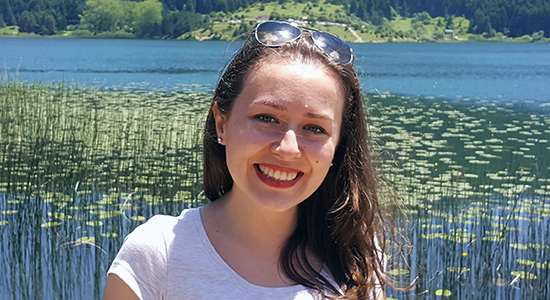
Name
Pelin Gülizar Ersan
Nationality
Turkish
Academic Background
PhD in Molecular Biology and Genetics (Bilkent University), BSc in Molecular Biology and Genetics (Istanbul University)
Project Title
Elucidating the role of tumor microenvironment in meningioma aggressiveness
Project Background
Meningiomas are the most common primary intracranial tumors accounting for 30% of all central nervous system (CNS) tumors. They are classified by World Health Organization (WHO) in grades I-III. The majority of meningiomas are benign grade I tumors that can be removed surgically or treated with radiation. However, higher grades (II-III) are more aggressive and associated with invasiveness, increased recurrence rates and poor clinical outcomes.
A growing body of evidence showed that the tumor microenvironment, the stromal contribution and immune cells are critical players through cancer progression in the brain. Moreover, inflammatory factors have been highlighted in the pathophysiology of meningioma. However, tumor microenvironment is poorly understood in meningioma. It is moreover unclear how the brain immune cells contribute to meningioma aggressiveness and whether changes in inflammatory factors promote the tumorigenesis.
Project Aim
Our goal is to understand the immune composition of meningiomas, to characterize neuroinflammatory profile in meningiomas and to show how neuroinflammation and tumor microenvironment influence meningioma aggressiveness, tumor-brain crosstalk and therapy response.
In this line, we will utilize a translational approach with patient-derived cell lines, single cell sequencing, spatial transcriptomics, and preclinical meningioma models.
Expected Outcome
With this study, we expect to identify crosstalk between tumor cells and microenvironment which influence tumor behavior and degree of malignancy in meningioma. Our research will offer effective systemic or molecular therapies for meningioma patients and uncover possible targets for immunotherapy.
Contact
Host group: Bjarne Winther Kristensen
 Name
Name
Clara Oudenaarden
Nationality
Dutch
Academic background
PhD in Laboratory medicine, experimental oncology (Lund University, Sweden); M.Sc. in Cancer genomics and developmental biology and B.Sc. in Biology (Utrecht University, Netherlands).
Project title
The role of CD206+ tumor associated microglia and macrophages in glioblastoma progression, recurrence, and therapy resistance
Project background
Glioblastoma is the most frequent and malignant brain tumor with 15.000 new cases each year in the EU. The median survival is 15 months despite maximum treatment efforts and tumor recurrence is almost inevitable.
One contributing factor to the aggressiveness of this tumor is the interaction of malignant glioblastoma cells with other cell types, such as immune cells, that are present in the tumor mass.
A major player in this so-called glioblastoma microenvironment are the tumor-associated microglia and macrophages (TAMs), which comprise approximately 30% of the tumor mass.
An increased level of TAMs is directly correlated to a higher tumor grade and their direct and indirect communication with tumor cells contribute to tumor growth, invasiveness, and therapy resistance. However, the mechanism of action and the exact role of TAMs remains yet to be unraveled.
In my project I will focus on a specific subset of TAMs that express the CD206 receptor. It has been shown previously that most glioblastomas contain CD206-positive TAMs and that these cells are present close to blood vessels or in the infiltrative edge of the tumor.
Characterizing the role and significance of TAMs in glioblastoma progression, recurrence, and therapy resistance is, in my view, a major scientific challenge of critical importance for the next decade that can be explored with this research project.
Project aim
My overall objective is to interrogate the role of CD206-positive TAMs in glioblastoma progression, recurrence, and therapy resistance.
Expected outcome
By acquiring a detailed picture of CD206-positive TAMs in glioblastoma progression, recurrence, and therapy resistance this research project could potentially lead to novel strategies for clinical trials that specifically target these cells.
Investigating cellular interactions between CD206-positive TAMs and tumor cells could identify clinically relevant targets that delay glioblastoma recurrence and enhance the effect of therapy.
Validation of targets in patient-derived organoids is an important translational aspect of this project emphasizing my intention of taking my findings to the clinical setting.
Contact
Host group: Bjarne Winther Kristensen
Third cohort

Name
Sanket Desai
Nationality
Indian
Academic Background
Post-doctoral fellow in Genome data science at IRB, Barcelona, Spain; PhD in Cancer Genomics at ACTREC-TMC (HBNI University), Navi Mumbai, India; MSc. Bioinformatics at SMU, Manipal, India; BSc. Zoology at Goa University, India.
Project Title
Harnessing machine learning based approaches to predict cancer risk using genomics data
Project Background
In recent years, a significant progress has been made in understanding how our genetic makeup can influence the risk of developing certain diseases.
Large-scale genome-wide association studies (GWAS) have played a crucial role in identifying key loci, in our DNA that are linked to different cancer types. These discoveries allow researchers to calculate a person's overall genetic risk using a method called a polygenic risk score (PRS).
However, applying these methods to predict cancer risk in a clinical setting is still challenging due to differences in genetic makeup across populations (ethnicity) and the inability of the methods to correctly identify the causal variants.
Machine learning, especially the large-language models have been recently developed on protein and DNA sequence data and have shown to be effective in predicting the genome-wide variant effects in human as well as other species.
We aim to exploit ability of these models to identify and prioritize the cancer causing variants and use them in constructing novel polygenic risk score models.
By fine-tuning these models with cancer-specific genetic information, we hope to improve disease risk predictions. This could lead to more personalized and effective strategies for identifying higher risk of developing cancer even across populations, for individuals with different genetic architecture.
Project Aims
The project aims to use machine learning techniques, particularly large-language models that analyze DNA, to identify genetic variants linked to cancer. By doing so, we hope to improve the accuracy of predicting cancer risk for specific types of cancer.
Expected Outcome: An improved method to identify individuals with high risk to develop specific cancer, wherein the genetic variations identified to be potentially cancer associated will also allow identification of underlying biologically functional elements.
This work may not only allow identification of individuals at higher risk of developing cancer, but also shed light on novel mechanisms causing cancer.
Contact
Host group: Fran Supek
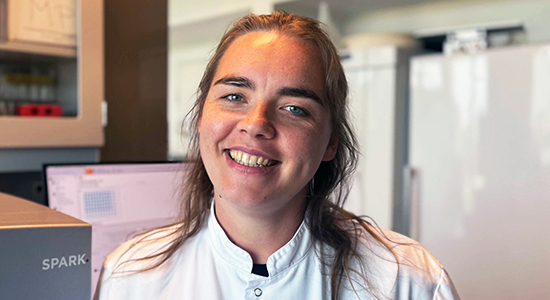
Name
Marina Mutas
Nationality
German
Academic Background
PhD in Chemistry, University of Hamburg, Hamburg, Germany; M.Sc. in Chemistry, University of Hamburg, Hamburg, Germany; B.Sc. in Chemistry, University of Hamburg, Hamburg, Germany
Project Title
Investigating the regulation of Endothelial Lipase by ANGPTL3
Project Background
All organisms, including us humans, need energy to carry out important functions, from tiny cellular activities to complex physical processes.
We get this energy from the food we eat, which consists of three main components: carbohydrates, proteins and fats or lipids. Unlike the first two, fats are not water-soluble and must be transported to their destination in transport vehicles called lipoproteins and then removed again from these vehicles to provide energy.
Abnormalities in the normal processing of these lipids or fats, due to mutations or other factors, can lead to the development and progression of diseases, including heart diseases, which are one of the leading causes of death worldwide.
Endothelial lipase (EL) is an enzyme that breaks down fats, similar to other enzymes such as lipoprotein lipase (LPL) and hepatic lipase (HL). However, EL differs from other enzymes in that it mainly breaks down one type of fat called phospholipids contained in high-density lipoprotein (HDL), which is often referred to as "good cholesterol".
Project Aim
Angiopoietin-like protein 3 (ANGPTL3) is a glycoprotein secreted by the liver that inhibits the activity of both LPL and EL, respectively. While we already know a lot about how LPL works and is regulated by ANGPTL3, we don’t know as much about how EL works or how ANGPTL3 affects it.
This project aims to understand how ANGPTL3 controls EL and how this may impact HDL (“good cholesterol”). We will utilize various biochemical analyses, including phospholipase activity assays, site-directed mutagenesis, and hydrogen-deuterium exchange mass spectrometry, to identify the functional interactions of ANGPTL3 with EL.
Expected Outcome
With this study, we investigate whether ANGPTL3 inhibits EL by causing changes in its structure, similar to how it affects LPL. By understanding how ANGPTL3 inhibits EL and how this affects HDL metabolism, we can learn more about how fats are regulated and improve treatments for metabolic and heart diseases.
Contact
Host group: Michael Ploug
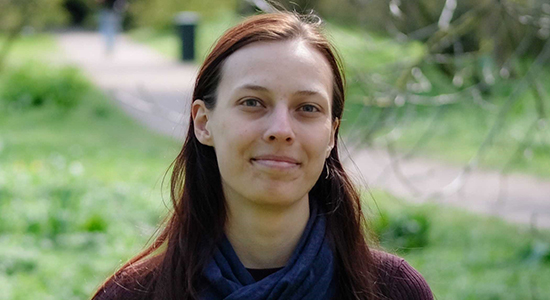
Name
Katarzyna Radke
Nationality
Polish
Academic Background
PhD in Translational Cancer Research and Molecular Pediatric Oncology (Lund University, Sweden); Master’s degree in Pharmacy (Poznan University of Medical Sciences, Poland).
Project title
Precision therapy in pancreatic ductal adenocarcinoma: integrating strategies to combat resistance.
Project Background
Pancreatic ductal adenocarcinoma (PDAC) is a particularly aggressive type of cancer. On average, patients diagnosed with PDAC live less than six months, and only 12% survive for more than five years.
The main treatments are chemotherapy and radiotherapy, but these are often not very effective due to the cancer’s complex biology and variability from patient to patient.
To better understand and combat this disease, we need advanced models that accurately reflect its behaviour. Additionally, the cancer’s ability to adapt and change in response to treatment makes it even harder to eliminate.
Our hypothesis suggests that cancer cells are constantly changing their behavior between different states known as phenotypes. This helps them survive the harsh conditions created by chemotherapy and other treatments used in the clinic.
We believe that this process, while unique to each patient, is controlled by similar key factors. By targeting the cancer’s ability to adapt, we aim to make the cells less resilient, overcome resistance to treatments, and stop the disease from progressing.
Project Aims
This project aims to study how PDAC resists treatment by using advanced techniques like patient-derived organoid cultures and co-cultures.
We will conduct high-throughput screening to find new molecules that can target cancer cells and investigate how treatments affect the cancer’s adaptability.
Expected Outcome
We hope to identify potential drugs in patient-derived models that can be used in clinical settings.
Additionally, we aim to understand how patient-derived organoids respond to therapies and find combinations of treatments that can make tumors more sensitive to standard therapies and prevent resistance.
Contact
Host group: Luis Arnes / Krister Wennerberg
